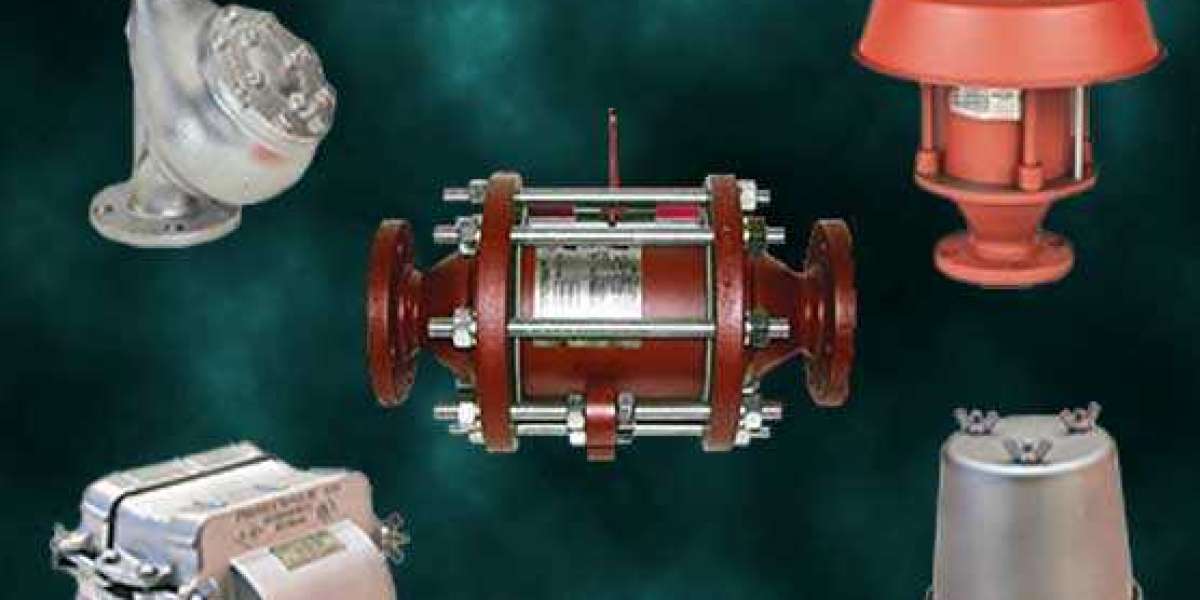Detonation arresters are important safety devices which prevent explosions from propagating within the pipelines and ducting systems of an industrial unit. It plays a very significant role in having the safety of the facility which engages with the flammable gases and vapors and its compliance to the industrial regulation parameters. In this article, we will discuss what detonation arresters their types and applications, and the major factors to consider during the selection phase.
What Is Detonation Arresters?
Detonation arresters are devices that do not allow those high-velocity pressure waves and flames to propagate through pipe systems. It differs from a flame arrestor--that stops slow-moving flames but it is dedicated to the high-speed travel of exploding-air detonation, which may cause catastrophic damage to systems. It allows energy dissipation of the detonation wave and cools the gas to stop further combustion.
How Do Detonation Arresters Work?
Working principles of detonation arresters can be summarized in the following:
- Absorbing Shockwave: They have specially designed elements which absorb the intense shockwave energy.
- Cooling and Quenching Flames: The internal structure cools the burning gases, preventing upstream ignitions.
- Restriction of Flame Propagation: Stops detonation waves in their path thus preventing explosions from propagating within connected systems.
Kinds of Detonation Arresters
Detonation arresters come in basically the following categories:
- Inline Detonation Arresters – These are placed on a pipeline installing arresters at points where the detonation propagation must be halted either backward or forward.
- End-of-line Detonation Arresters – These have been placed on venting points to avoid the pass of explosion entering the system from outside.
- Bi-Directional Detonation Arresters – Devices that can be installed in sites where detonations may occur at both ends.
Applications of Detonation Arresters
Detonation arresters are applied in very many industries where there is a presence of flammable gases and vapors:
- Oil and Gas Industry – Protects pipelines and tanks from explosion hazards.
- Chemical Processing Companies – Safety on volatile chemical transfer systems at process plants.
- Power Generation Facilities – Preventing fire hazards on gas turbines and fuel storage areas.
- Pharmaceutical Industry – Protection in the handling of flammable solvents and vapors.
Deciding Factors for Detonation Arrester Selection
Selection of Detonation Arresters is very careful and takes consideration of many factors associated with the following:
- Operating Pressure and Temperature: Specify the pressure for which your arrester is rated in an ambient condition as with its temperature.
- Pipe Size and Flow Rate: Choose a discharge model whose flow characteristics match with your system.
- Safety Standards: Look at those which fall under API, ISO, ATEX, and NFPA compliances.
- Material Durability: Pick an arrester made in materials resistant to corrosion to ensure the long-term reliability of functions.
- Ease of Maintenance: Look for such designs that favor easy inspection and servicing.
Maintenance Operations and Best Practices
To remain in efficient working condition, maintenance should be regularly carried out on any detonation arrester:
- Periodic Inspection: Internal elements should be checked for blockages, corrosion, or damage.
Cleaning Intervals: These include cleaning out loose debris and removing carbon buildup that can restrict gas flow.
- Monitoring Pressure Drops: Sudden pressure drops may show the presence of partial blockage.
- Satisfying Manufacturer Actions: Any recommended service intervals and replacement parts should be utilized.
Industry Standards and Compliance
Policies existing in the industry must be adhered to for any detonation arresters to be considered reliable. Some of the standards include:
• API 2000 – Guidelines on venting and explosion protections concerning storage tanks.
• Certification- equipment for explosive atmosphere in Europe directive.
• ISO 16852 - An international standard to flame and detonation arresters.
• NFPA 69- Fire protection standard for explosion prevention systems.
The Most Common Issues Trouble-Shooting
Even highly qualified detonation arresters can have operational issues. Common issues are as follows:
Blockages from Debris: With debris, it is important to carry out cleaning regularly to be without blockages.
- Corrosion and Material Degradation: Right material will help maximize the lifespan.
- Poor Installation: Articulated systems with improper installation will not work and pose a safety risk.
- System pressure drops affecting performance: System pressure is monitored for proactive identification of potential problems.
Conclusion
Detonation arresters are vital for an industrial safety system to prevent catastrophic explosions in pipelines and process systems. Choice, proper maintenance, and conformity with industrial standards for detonation arresters can help save assets, workers, and facilities. An investment in high-count detonation arresters represents a commitment to the future of safer, reliable industrial operations.








